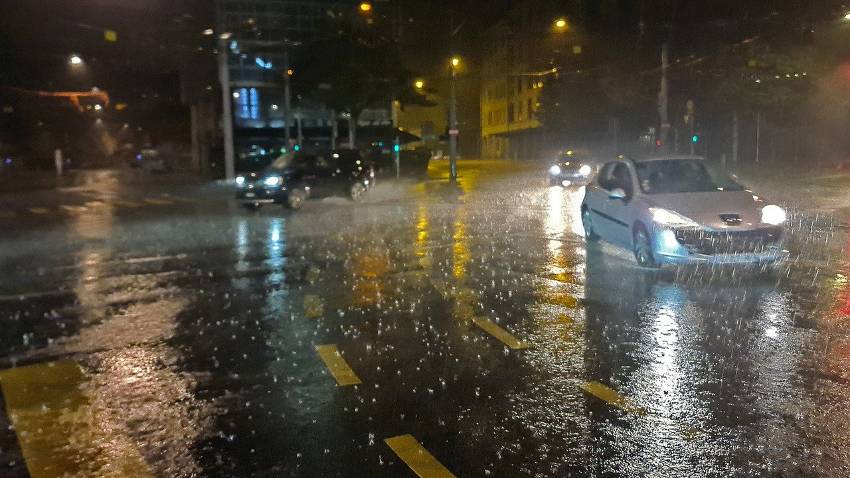Summary: New research from Penn State reveals that microplastics floating in the atmosphere can trigger ice crystal formation in clouds at warmer temperatures than normal. This discovery suggests these ubiquitous pollutants may be affecting weather patterns, precipitation, and potentially even climate systems in ways we’re only beginning to understand.
Journal: Environmental Science and Technology: Air, November 7, 2024, DOI: 10.1021/acsestair.4c00146
Reading time: 6 minutes
From Earth’s Depths to Mountain Peaks
They’ve been found in the deepest ocean trenches and atop Mount Everest. They’re in the snow, in our bodies, and even in plant roots. Now, scientists have discovered that microplastics – tiny plastic fragments smaller than 5 millimeters – may be playing an unexpected role in our atmosphere: helping to form clouds.
A groundbreaking study published in Environmental Science and Technology: Air reveals that these microscopic pieces of plastic pollution act as ice nucleating particles, tiny aerosols that facilitate ice crystal formation in clouds. This finding opens up new questions about how human pollution might be affecting weather patterns and climate systems.
The Science Behind the Discovery
In carefully controlled laboratory experiments, Penn State researchers examined four common types of microplastics: low density polyethylene (LDPE), polypropylene (PP), polyvinyl chloride (PVC), and polyethylene terephthalate (PET). Their methodology was precise – suspending these plastic particles in water droplets and gradually cooling them to observe their effects on ice formation.
“Throughout the past two decades of research into microplastics, scientists have been finding that they’re everywhere, so this is another piece of that puzzle,” explains Miriam Freedman, professor of chemistry at Penn State and senior author on the paper. “It’s now clear that we need to have a better understanding of how they’re interacting with our climate system, because we’ve been able to show that the process of cloud formation can be triggered by microplastics.”
A Warming Effect on Ice Formation
The results were striking. Water droplets containing microplastics froze at temperatures 5-10 degrees warmer than those without. Lead author Heidi Busse notes, “In the case of our microplastics, 50% of the droplets were frozen by minus 22 degrees Celsius for most of the plastics studied. It turns out that if you introduce something insoluble, you introduce a defect into that droplet and it can nucleate ice at warmer temperatures.”
Implications for Weather and Climate
This discovery has potentially far-reaching implications for our understanding of weather patterns. When microplastics are present in clouds, they can affect how water droplets form and eventually fall as precipitation. In polluted environments with more aerosol particles, water gets distributed among many more particles, forming smaller droplets around each one. This can lead to delayed but heavier rainfall when it finally occurs.
The researchers also investigated how environmental aging affects microplastics’ ice-forming abilities. Through exposure to light, ozone, and acids, they found that aging generally reduced ice formation in most plastics, except for PVC, which showed increased ice-forming ability after aging.
Glossary
• Ice nucleating particles: Microscopic aerosols that facilitate the formation of ice crystals in clouds
• Mixed-phase clouds: Clouds containing both liquid water and ice crystals
• Environmental aging: Natural photochemical processes that affect particles over time in the environment
• Aerosols: Tiny particles suspended in the atmosphere
Reader Comprehension Quiz
1. What size are microplastics?
Answer: Smaller than 5 millimeters
2. How much warmer did water droplets with microplastics freeze compared to those without?
Answer: 5-10 degrees warmer
3. What happened to most plastics’ ice-forming ability after environmental aging?
Answer: It was reduced
4. At what temperature did 50% of the droplets with microplastics freeze?
Answer: Minus 22 degrees Celsius
Enjoy this story? Get our newsletter! https://scienceblog.substack.com/
If our reporting has informed or inspired you, please consider making a donation. Every contribution, no matter the size, empowers us to continue delivering accurate, engaging, and trustworthy science and medical news. Independent journalism requires time, effort, and resources—your support ensures we can keep uncovering the stories that matter most to you.
Join us in making knowledge accessible and impactful. Thank you for standing with us!

